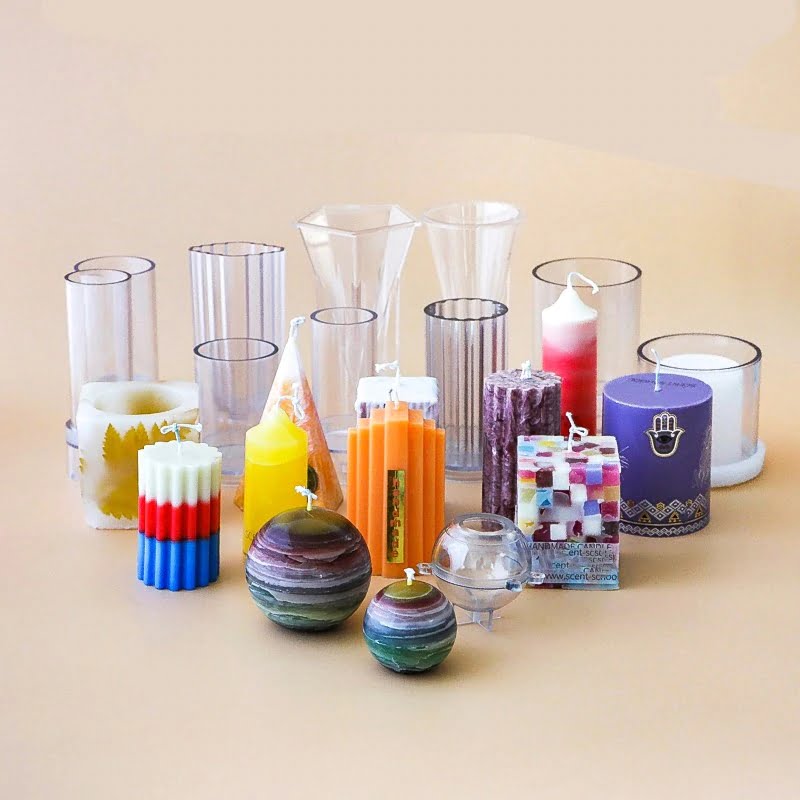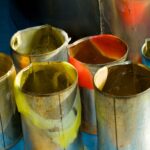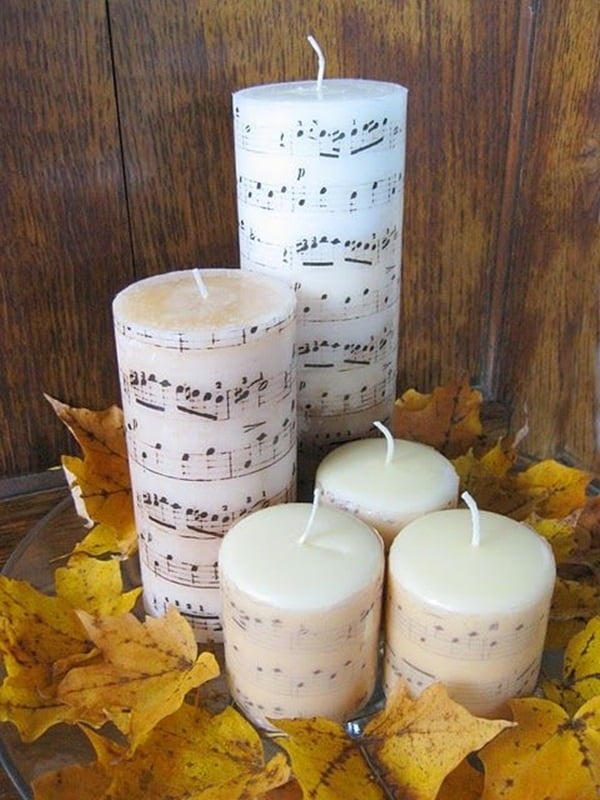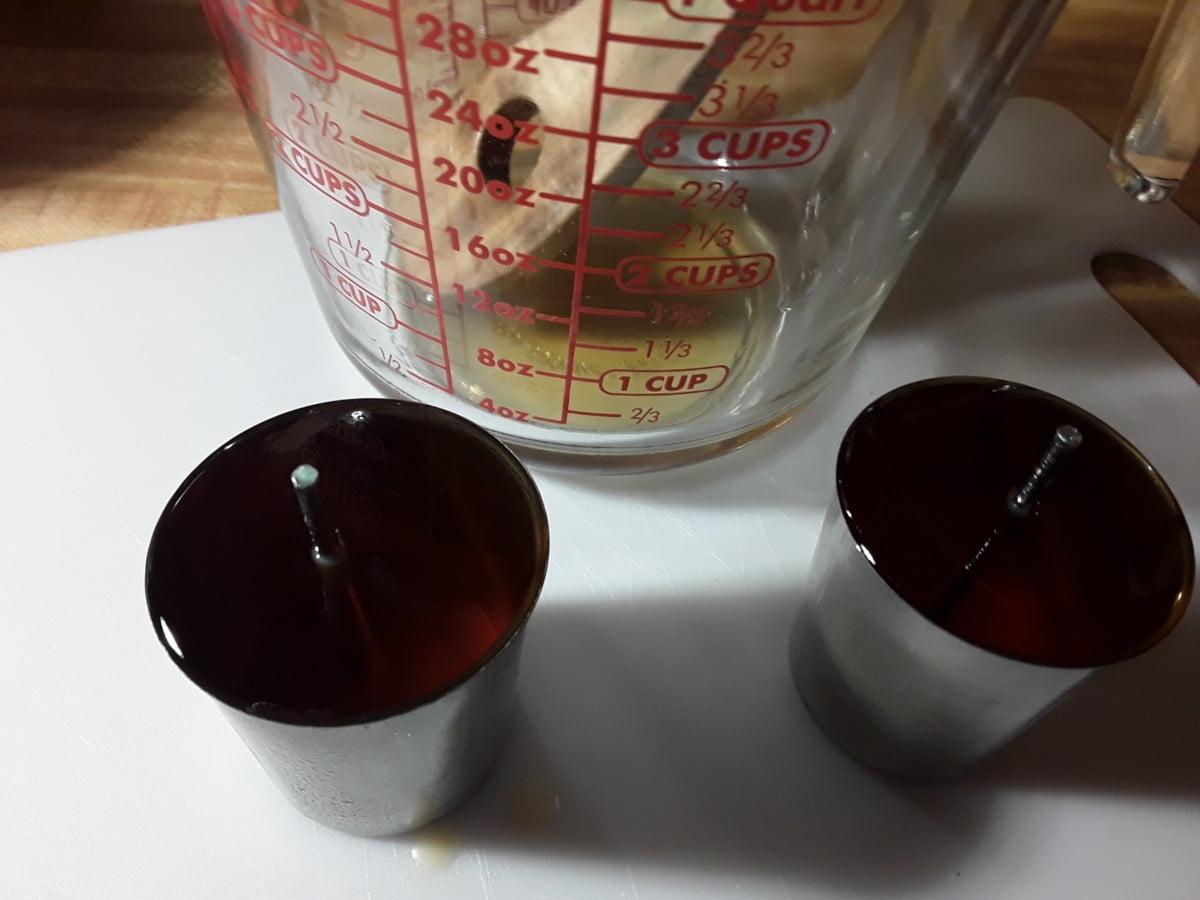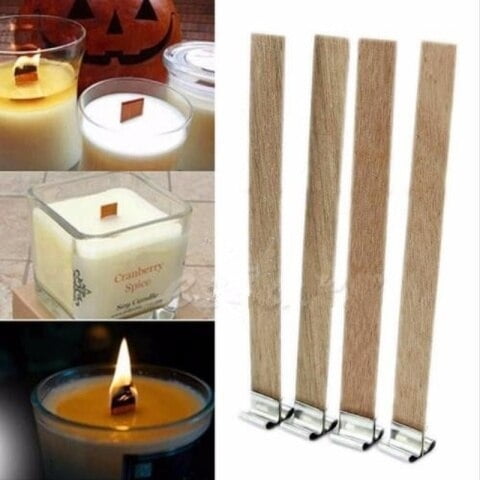Beeswax candles have long been cherished for their beauty, gentle glow, and numerous benefits. Crafting your own beeswax candles allows you to create personalized and eco-friendly creations that add warmth and ambiance to any space.
In this article, we will explore the essential equipment needed for beeswax candle making, delve into the process of selecting high-quality beeswax, examine the role of wicks in achieving optimal burn, and discover the various mold and container options available for creating unique candle designs. Whether you are a seasoned candle maker or just starting out, this guide will provide you with valuable insights and tips to help you embark on a rewarding journey of beeswax candle making.
When it comes to choosing candles, opting for beeswax is a decision that brings both aesthetic pleasure and environmental benefits. Beeswax candles emit a warm golden glow that creates a soothing atmosphere in any room. Additionally, they release negative ions when burned, which can purify the air by neutralizing harmful pollutants and allergens.
Unlike paraffin candles derived from petroleum, beeswax is a natural renewable resource that burns cleanly without emitting toxic fumes or soot. By engaging in beeswax candle making, you not only get to enjoy the charm of handcrafted candles but also contribute to sustainability efforts.
Before diving into the process of crafting your own beeswax candles, it is important to familiarize yourself with the essential equipment required for this art form. The right tools can make all the difference in achieving professional-looking results.
Some of the necessary equipment includes a double boiler or melting pot for heating the wax evenly, thermometer for monitoring temperature, molds or containers for shaping your candles, wick holder or centering device to keep wicks in place while pouring hot wax, and various utensils like stirring sticks and ladles for handling molten wax. Investing in high-quality equipment ensures better control over your candle-making process and ultimately leads to more satisfying outcomes.
In the following sections, we will explore in more detail the different types of beeswax available in the market, how to select the ideal wax for your candles, and how to identify pure and high-quality beeswax. We will also discuss the role of wicks in achieving optimal burn, along with tips for selecting the right wick size.
Furthermore, we will delve into mold and container options that allow you to create visually appealing candle shapes and designs. By understanding the importance of each component in the candle-making process, you will be well-equipped to embark on your own beeswax candle making journey.
The Essential Beeswax Candle Making Equipment
- Double Boiler: A double boiler is used to melt the beeswax gently and evenly without direct heat. It consists of two pots, one nested inside the other, with water in the lower pot creating a gentle heat source.
- Thermometer: A thermometer is vital for monitoring the temperature of the beeswax. It helps prevent overheating, which can affect the quality and efficacy of your candles.
- Pouring Pitcher: A pouring pitcher with a spout makes it easy to pour melted beeswax into molds or containers without spilling or creating a mess.
- Molds or Containers: Molds or containers are used to shape and hold the melted wax as it solidifies into candles. There are various options available, including silicone molds, metal molds, glass containers, or decorative jars.
- Wick sustainers and wick bars: Wick sustainers are small metal tabs that hold the wick in place at the bottom of the candle. Wick bars keep the wick centered during pouring to ensure an even burn later on.
To achieve optimal results when making beeswax candles, investing in high-quality equipment is crucial. High-quality equipment not only lasts longer but also ensures that your candles turn out beautifully every time.
Avoid using potentially harmful materials like aluminum pots or low-quality thermometers that may affect your final product’s quality. Consider purchasing equipment specifically designed for candle making from reputable suppliers who specialize in beeswax candle making supplies.
Beeswax Selection
When it comes to beeswax candle making, choosing the right wax is crucial for achieving high-quality, long-lasting candles. With different types and grades of beeswax available in the market, it can be overwhelming to make the best choice for your candles. This section will provide insight into selecting the best wax for your beeswax candles.
There are several factors to consider when selecting beeswax for your candles. One important factor is the color of the wax. Beeswax can range from a pale yellow to a deep golden hue. The color depends on various factors such as the flowers visited by bees and how well it has been filtered. It is important to note that the color of the wax does not affect its quality or performance as a candle.
Another factor to consider is whether you want to use refined or unrefined beeswax. Refined beeswax has undergone a filtering process to remove impurities and debris, resulting in a cleaner appearance and potentially fewer issues with clogged wicks. On the other hand, unrefined beeswax is closer to its natural state and may contain tiny particles of pollen and propolis, which can add character and depth to your candles.
To identify pure and high-quality beeswax, look for products that are labeled as 100% pure beeswax or have undergone third-party testing. You can also check for certifications such as organic or natural labels. Additionally, reputable suppliers often provide information about their sourcing methods and beekeeping practices.
When choosing between different types of beeswax, it is beneficial to experiment with small batches before committing to bulk purchases or larger projects. This allows you to test how each type of wax performs in terms of scent throw, burn time, melting point, and overall satisfaction.
| Type | Description |
|---|---|
| Refined Beeswax | Filtered to remove impurities, resulting in cleaner appearance and potentially fewer clogged wicks. |
| Unrefined Beeswax | Closer to its natural state, may contain tiny particles of pollen and propolis which can add character and depth to candles. |
| Beeswax Pellets | Easier to measure and melt compared to solid blocks or bars of beeswax. |
Choosing the best wax for your beeswax candles is an important decision that impacts the overall quality and performance of your finished products. Take the time to research different types and grades of beeswax available, consider your desired aesthetic and performance characteristics, and experiment with small batches before committing to larger quantities.
With the right wax, you can create beautiful, long-lasting beeswax candles that will delight both yourself and those who receive them as gifts or purchase them from you.
The Importance of Wicks
When it comes to beeswax candle making, choosing the right wick is essential for optimal burn and performance. The wick plays a crucial role in how the candle burns, including the size of the flame and how evenly the wax is consumed. With a variety of wick options available, it’s important to understand the different types and sizes to select the most suitable one for your beeswax candles.
There are several factors to consider when choosing a wick for beeswax candles. One important factor is the width or diameter of the candle. The wider or larger the diameter, the thicker and more robust the wick should be to ensure it can adequately sustain and fuel a large flame.
In addition to diameter, another factor to consider is burn time. Some wicks are specifically designed for longer burn times while others are better suited for shorter candle durations. It’s important to select a wick that matches your desired burn time so that your candles can perform optimally.
To help you navigate through these options, here are some common types of wicks available:
– Square Braided Wicks: These wicks are often used in beeswax candles due to their ability to withstand high melt temperatures. They create stable flames and produce little smoke or soot.
– Cotton Wicks: Cotton wicks are typically made from natural fibers and offer good burning properties with minimal sooting.
– Ply Twisted Wicks: These wicks consist of multiple twisted strands and are known for producing bright flames with good stability.
It’s important to note that testing different wick sizes may be necessary when starting out with beeswax candle making. The same size wick may not work well across all beeswax formulations, so experimenting with different options can help you find the perfect match.
Finding the right wick is vital for creating beeswax candles that burn evenly, emit a pleasant scent, and last for a significant amount of time. By understanding the role of wicks in the candle burning process and being aware of the various options available, you can make informed decisions to achieve optimal results in your beeswax candle making ventures.
| Wick Type | Description |
|---|---|
| Square Braided Wicks | Used in beeswax candles due to their ability to withstand high melt temperatures. They create stable flames and produce little smoke or soot. |
| Cotton Wicks | Typically made from natural fibers and offer good burning properties with minimal sooting. |
| Ply Twisted Wicks | Consist of multiple twisted strands and are known for producing bright flames with good stability. |
Molds and Containers
When it comes to creating beeswax candles, the choice of molds and containers can greatly enhance the aesthetics of your finished products. Molds and containers not only serve as functional vessels for holding the melted wax but also contribute to the overall visual appeal of the candles.
There are various options available when it comes to choosing molds and containers for beeswax candles. One popular choice is silicone molds, which come in a wide range of shapes and sizes. Silicone molds are flexible, making it easier to remove the hardened wax from the mold without damaging the candle’s shape.
Another option is metal molds, which are durable and can withstand high temperatures. Metal molds often come with a wick hole at the bottom, allowing for easy wick insertion.
When selecting molds or containers, there are a few factors to consider. Firstly, think about the size and shape you desire for your candles. Consider whether you want votive candles, pillar candles, or even unique shapes like flowers or animals.
Additionally, consider the material of the mold or container and how it will affect your candle-making process. Silicone molds offer flexibility and easy removal but may require additional support during pouring to maintain their shape. Metal molds provide sturdiness but may require greasing or lining to prevent sticking.
To achieve unique and visually appealing candle shapes and designs, there are a few tips you can follow. If using silicone molds, you can experiment with layering different colors or adding botanicals such as dried flowers or herbs between layers for a natural touch. For pillar candles in metal molds, consider incorporating textures by pressing objects like lace or leaves onto the inside walls of the mold before pouring in the melted wax.
Helpful Tools for Beeswax Candle Making
When it comes to beeswax candle making, having the right tools can greatly enhance your candle-making experience and improve the quality of your candles. In addition to the essential equipment mentioned earlier, there are several helpful tools that can assist in the candle making process.
1. Double Boiler: A double boiler is a must-have tool for melting beeswax safely and efficiently. It consists of two pots, one larger pot filled with water and a smaller pot that sits inside the larger one. The double boiler provides indirect heat, preventing the beeswax from overheating or burning.
2. Thermometer: A thermometer is essential for monitoring the temperature of the melted beeswax. It helps ensure that you achieve the optimal pouring temperature for your candles, which is usually around 160-180°F (71-82°C). Using a thermometer helps prevent overheating or underheating of the wax, resulting in better quality candles.
3. Wick Centering Device: Wick centering devices are useful tools that help keep your wicks centered in the mold or container while pouring the melted beeswax. They come in various sizes and shapes to accommodate different candle sizes and designs. Using a wick centering device ensures that your candles have an even burn and prevent wick leaning or tunneling.
4. Wick Trimmer: A wick trimmer is specifically designed to trim the wicks of beeswax candles to keep them at an ideal length for optimal burning performance. Trimming the wicks before each lighting session promotes a cleaner burn and reduces mushrooming or sooting.
5. Silicone Mold Release Spray: If you’re using silicone molds for creating unique candle shapes, a silicone mold release spray can be incredibly helpful. It prevents sticking and allows for easy removal of candles from their molds without damaging their delicate designs.
Optional but beneficial tools include:
1. Beeswax Melter: A dedicated beeswax melter is a convenient tool for large-scale candle making. It allows you to melt a significant amount of beeswax at once, saving time and effort.
2. Wax Seal Stamp: For adding decorative touches to your beeswax candles, a wax seal stamp can be used. It creates elegant and personalized designs on the surface of the candles, adding an extra touch of creativity.
3. Scent Infuser: If you prefer scented candles, a scent infuser can be used to add fragrance oils or essential oils to your beeswax candles. It ensures even distribution of the scent throughout the candle and enhances the overall sensory experience.
Investing in these helpful tools can make your beeswax candle making process more efficient, creative, and enjoyable. Remember to always follow safety precautions and experiment with different equipment to discover new techniques and styles for your unique beeswax candles.
Safety Precautions and Tips for Beeswax Candle Making
One of the most important aspects of any craft is ensuring the safety of both the crafter and those who will be using the final product. Beeswax candle making is no exception, as it involves working with potentially hot materials and open flames. By taking proper safety precautions and following some helpful tips, you can enjoy a safe and successful candle-making experience.
Important Safety Precautions
When working with beeswax, it is essential to prioritize safety at all times. Here are some key precautions to keep in mind:
- Adequate Ventilation: Beeswax emits fumes when heated, so it’s crucial to work in a well-ventilated area or use a ventilation system to prevent inhalation of these fumes.
- Protective Clothing: Wear appropriate clothing, such as long sleeves and pants, to protect your skin from hot wax splatters or spills. Consider wearing heat-resistant gloves to avoid burns.
- Working Surface Protection: Place a protective covering on your workspace to prevent damage from spills or accidental exposure to hot materials.
- Fire Safety: Keep a fire extinguisher within reach in case of emergencies. Never leave your workspace unattended while candles are burning or cooling.
- Heat Sources: Use caution when working with heat sources such as stovetops or hot plates. Always turn off heat sources when they are no longer needed.
Tips for Safe Candle Making
In addition to following safety precautions, here are some helpful tips to ensure a safe candle-making process:
- Read Instructions Carefully: Before starting any project, thoroughly read and follow the instructions provided by the equipment manufacturer or candle-making kit supplier.
- Temperature Control: Maintain appropriate temperatures during each step of the candle-making process to prevent overheating or underheating of wax, which can affect the quality of your candles.
- Handle Hot Wax with Caution: Be mindful of the temperature of your wax and avoid direct contact with your skin. Hot wax can cause serious burns, so use tools or mitts to handle it safely.
- Proper Wick Placement: Ensure that your wick is securely centered in the mold or container to promote even burning and prevent potential fire hazards.
- Monitor Burning Candles: Never leave burning candles unattended, and always keep them out of reach of children or pets. Place candles on heat-resistant surfaces and away from flammable objects.
By following these safety precautions and tips, you can create beautiful beeswax candles while minimizing risks. Remember, prioritizing safety not only protects yourself but also ensures that your candles bring joy and beauty into any space without causing harm.
Maintaining and Cleaning Beeswax Candle Making Equipment
Essential steps for cleaning and maintenance of candle making equipment
Properly maintaining and cleaning your beeswax candle making equipment is crucial for ensuring the longevity and optimal performance of your tools. By following a few simple steps, you can keep your equipment in excellent condition for years to come.
First and foremost, it’s essential to remove any excess wax from your equipment after each use. One method is to gently scrape off the excess wax using a plastic scraper or an old credit card. Be careful not to scratch the surfaces of your equipment while doing this. Alternatively, you can also place your equipment in the freezer for a few minutes, which will cause the wax to harden and shrink, making it easier to remove.
Once the excess wax is removed, you can wash your equipment with warm water and mild dish soap. Avoid using harsh chemicals or abrasive cleaners as these can damage the surfaces. Use a soft sponge or cloth to clean all parts thoroughly. For smaller or hard-to-reach areas, you can use a soft-bristle brush to ensure a thorough clean.
Importance of regular maintenance for longevity and performance
Regular maintenance of your beeswax candle making equipment is crucial for its proper functioning and longevity. By taking care of your tools, you ensure that they continue to produce high-quality candles without any interruptions.
One important aspect of maintenance is inspecting your equipment regularly for any signs of wear or damage. Check all parts, such as molds, containers, and heating devices, for cracks, dents, or other issues that may affect their performance. Replace any damaged parts promptly to prevent further damage or accidents during the candle making process.
Additionally, lubricating moving parts such as hinges or bolts with a small amount of food-grade oil can prevent rusting or sticking over time. Regularly check these areas and apply oil as needed.
By prioritizing regular maintenance, you can extend the lifespan of your candle making equipment and ensure consistent and efficient candle production.
Tips and tricks for effective equipment care and storage
Proper storage of your beeswax candle making equipment is just as important as regular maintenance. Here are some tips and tricks to keep in mind:
- Store all your tools in a clean, dry, and dust-free environment. Moisture can cause mold or mildew growth, which can damage your equipment.
- When storing molds or containers, make sure they are completely dry to prevent any moisture from being trapped inside. This can also help prevent oxidation or rusting.
- Consider using protective cases or covers for your more delicate equipment, such as thermometers or measurement tools, to avoid accidental damage when not in use.
- If possible, store your equipment in a designated area where it won’t be disturbed or at risk of falling or getting damaged by other objects.
By following these tips and incorporating regular maintenance into your routine, you can ensure that your beeswax candle making equipment remains in excellent condition for years to come, allowing you to enjoy the art of candle making with ease and satisfaction.
Conclusion
In conclusion, beeswax candle making is not just a craft, but an art that allows individuals to embrace their creativity and create beautiful and unique candles. Choosing the right equipment is crucial in achieving optimal results and enhancing the overall candle making experience. Investing in high-quality equipment ensures better performance and longevity, ultimately leading to the creation of high-quality candles.
When selecting beeswax for your candles, it is important to consider the different types and grades available in the market. By identifying pure and high-quality beeswax, you can ensure that your candles burn evenly and emit a pleasant aroma. Additionally, understanding the role of wicks in beeswax candle burning is essential in selecting the appropriate wick for optimal performance.
Enhancing the aesthetics of your beeswax candles can be achieved by exploring various mold and container options. By considering factors such as shape, size, and design, you can create visually appealing candles that bring a touch of beauty to any space. Moreover, using additional tools during the candle making process can assist in improving efficiency and creativity.
Safety precautions should always be followed when working with beeswax to ensure a safe candle making experience. Proper storage and handling of equipment and materials are also important for maintaining their longevity. Regular cleaning and maintenance of candle making equipment are essential for ensuring its continued performance.
Overall, embracing the art of beeswax candle making allows individuals to tap into their creativity while enjoying the benefits of beautifully crafted candles. By choosing proper equipment, exploring different techniques and designs, and following safety precautions, anyone can experience the satisfaction of creating their own unique beeswax candles. So go ahead and immerse yourself in this rewarding craft – let your imagination run wild as you create stunning works of art with each flickering flame.

Welcome to my candle making blog! In this blog, I will be sharing my tips and tricks for making candles. I will also be sharing some of my favorite recipes.

